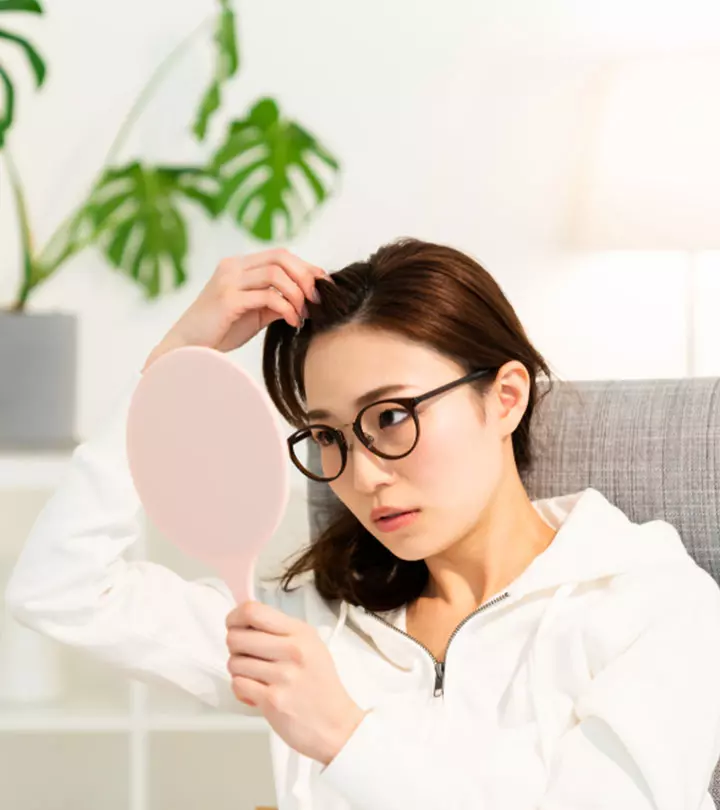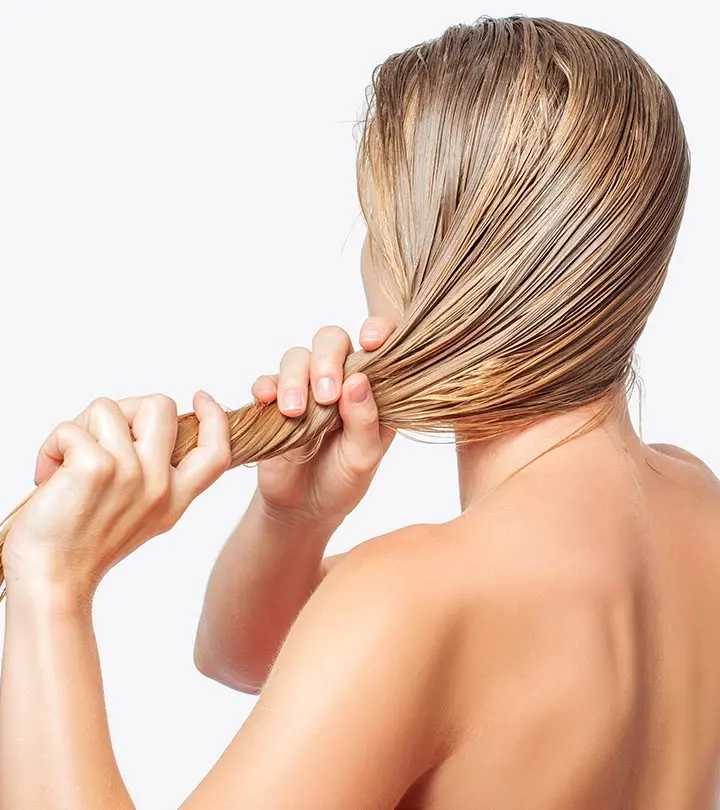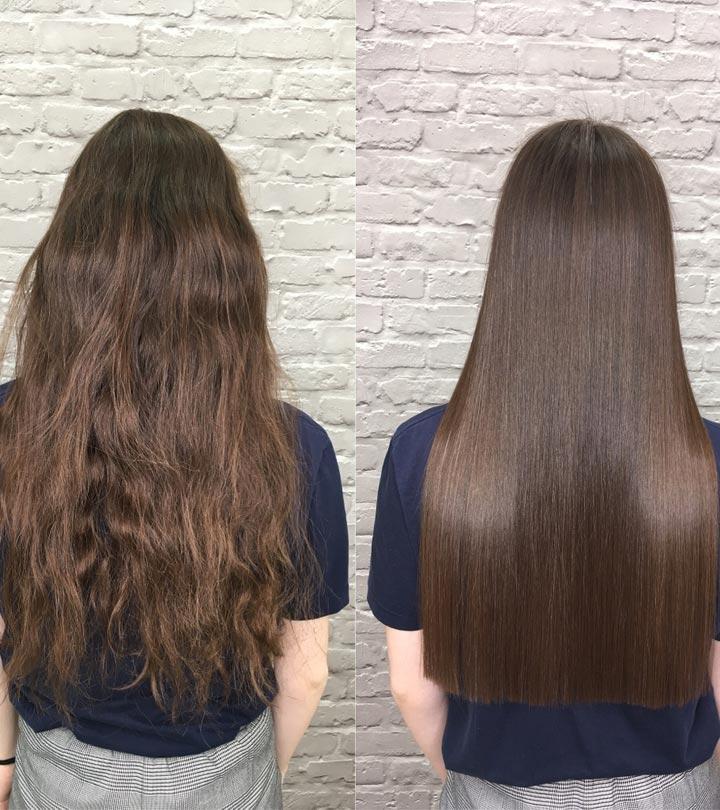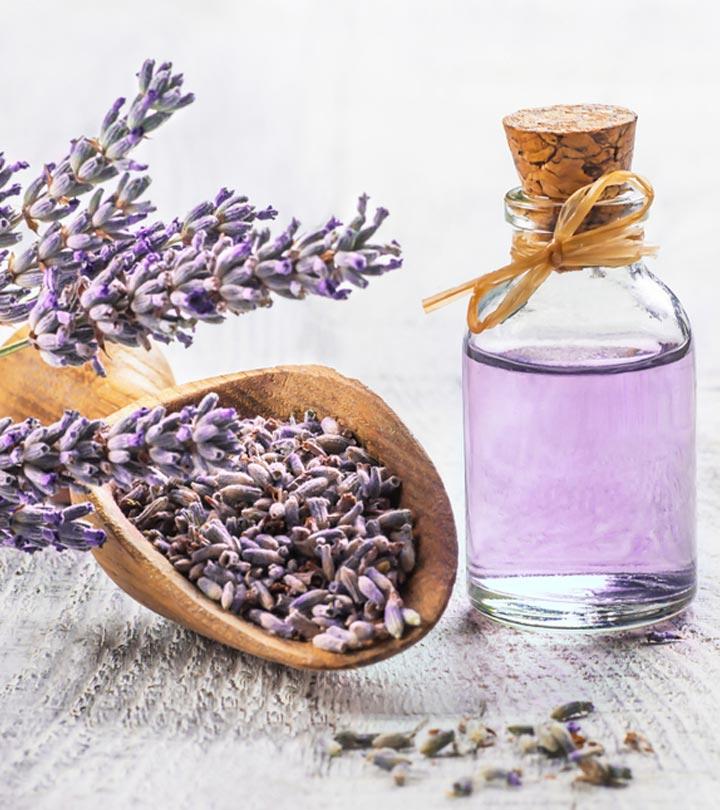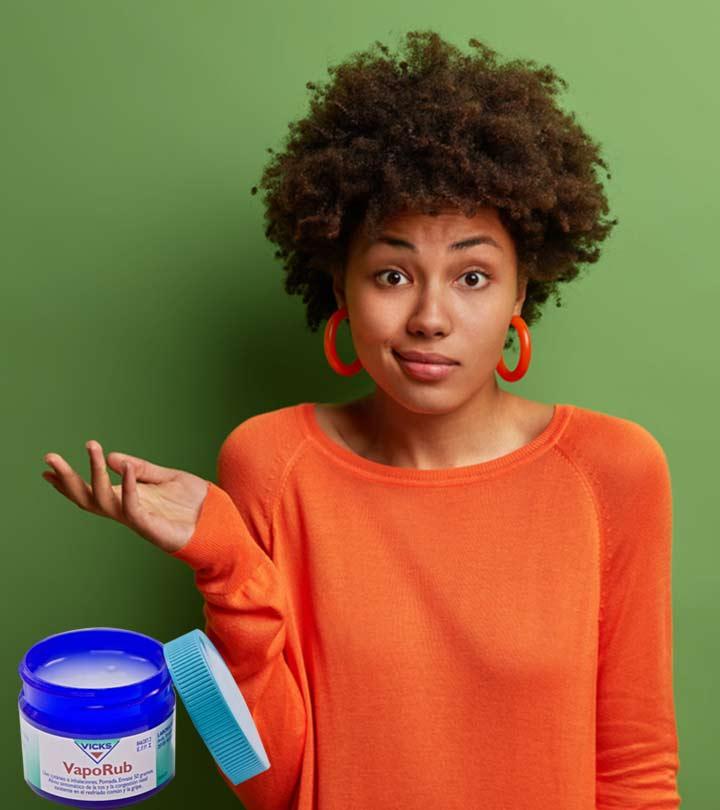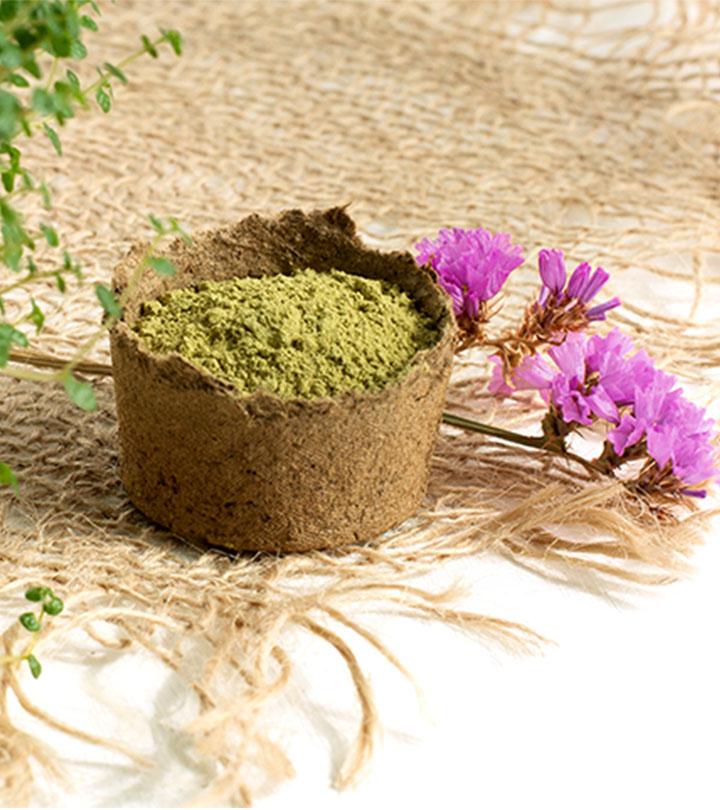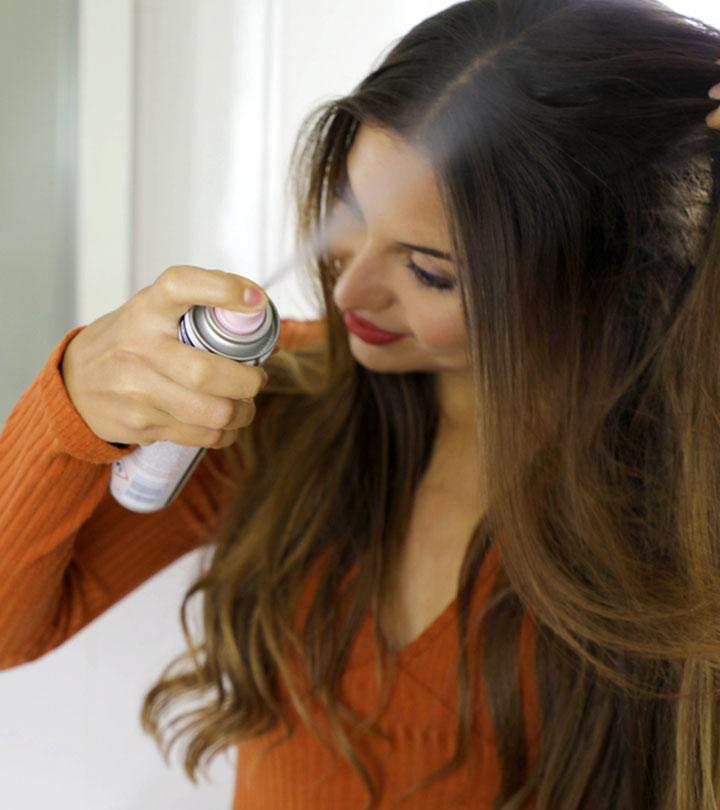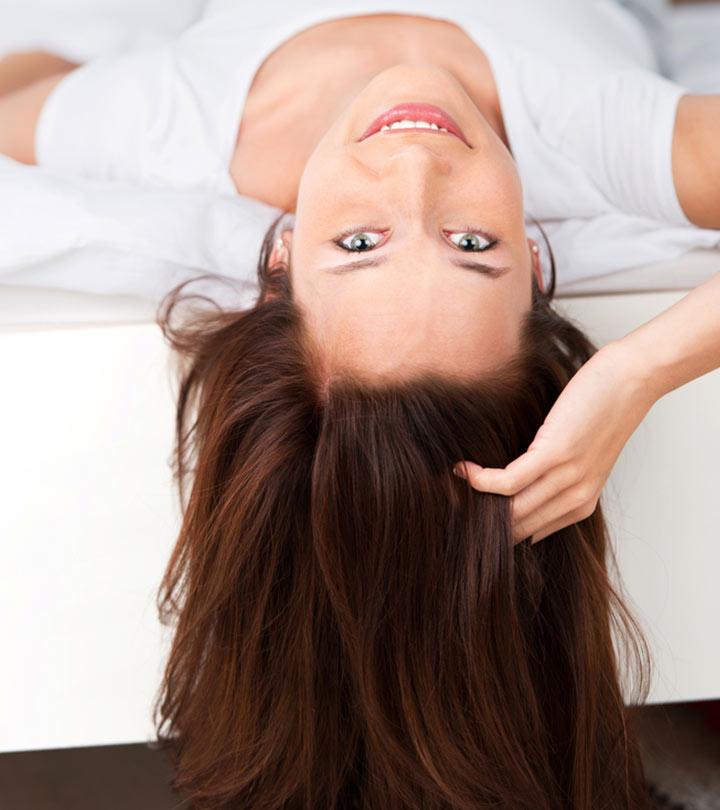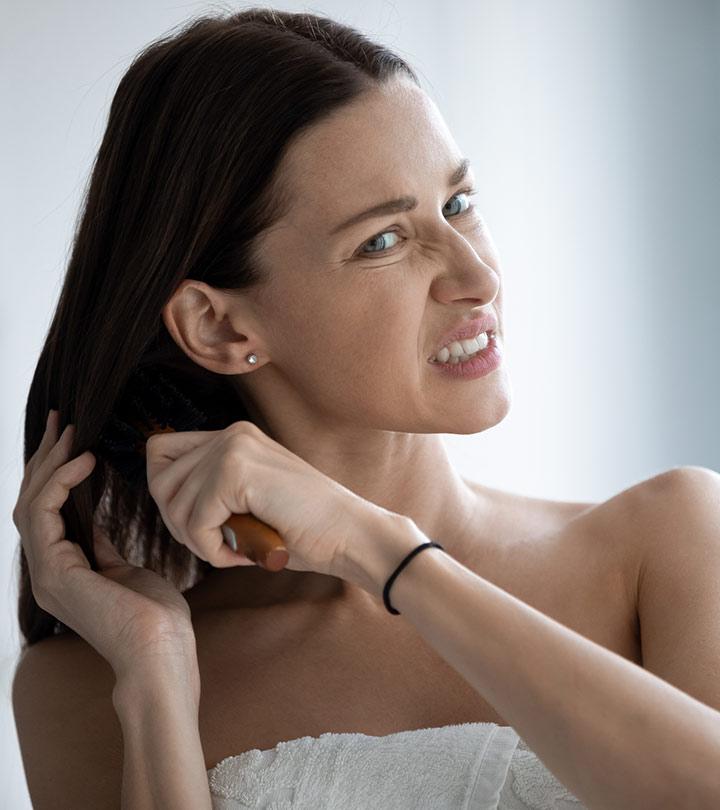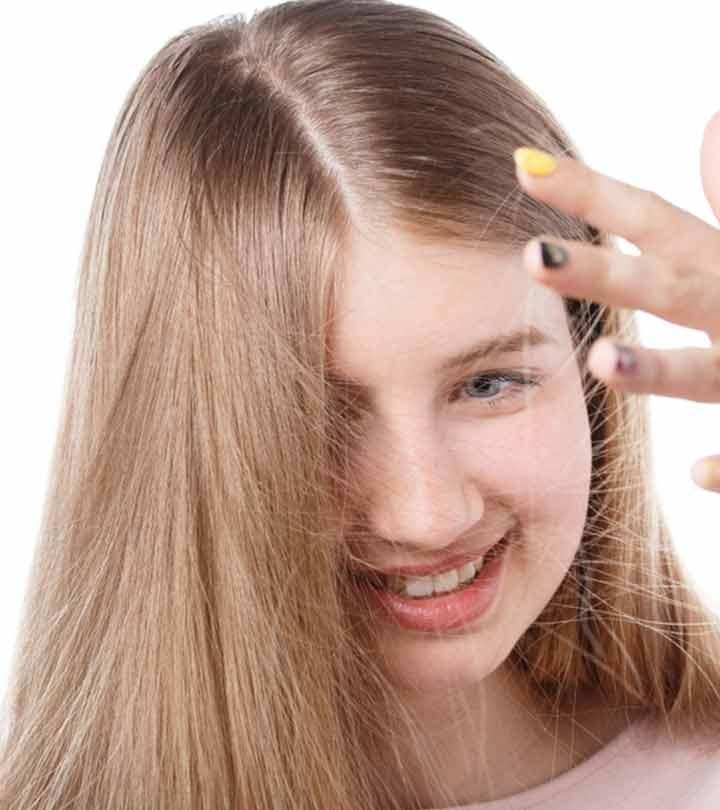Top 5 Signs Of Healthy Hair And How To Treat It Properly
Decode the signs of healthy hair and master the art of nurturing your mane rightly

Image: Shutterstock
When your hair is smooth and shiny, it is said that your hair is healthy (1). However, not everyone has that type of hair. Your hair may not look shiny or feel smooth, but that does not necessarily mean that it is unhealthy. You may be blessed with great tresses but are just unaware of it. In this article, we tell you all about the real signs of healthy hair. Scroll down to learn more.
In This Article
5 Signs Of Healthy Hair You Can Check For At Home
Constant styling, pollution, aging, and hormonal imbalance can all have evident effects on your hair. It is, hence, critical to monitor your hair health. Here are a few properties or signs you need to check regularly to understand your hair needs:
1. Elasticity
Healthy hair is elastic and does not snap on stretching. Wet hair can stretch 30% of its original length without damage. In other words, your hair strands should come back to their natural form, however curly or straight, after styling and stretching. But note that excessive stretching between 30% and 70% may cause irreversible changes and breakage (1).
To check the elasticity of your hair:
- Hold a hair strand between your fingers.
- Gently pull it in the opposite direction.
- The hair strand should stretch and bounce back.
If it does not return to its original form and snaps, your hair lacks moisture and is brittle. You can improve hair elasticity naturally by increasing your dietary protein intake. Another way is to try non-toxic hair protein treatments periodically at a trusted hair salon or clinic.
2. Porosity
The hair strands can hold moisture. The hair cuticles are porous enough to absorb and retain hydration to maintain healthy and lustrous tresses. Low porosity hair (usually types 3 and 4) has a tough time absorbing moisture, which affects its shine, texture, and strength. Lack of moisture causes frizz, friction, breakage, and ultimately hair fall.
One of the easiest ways to check the hair porosity is to do a Float Test. Here’s how:
- Place a hair strand in a cup of plain water.
- If it gets heavy and sinks, your hair is highly porous and damaged.
- If it sinks after several minutes, it is healthy.
- If it does not sink and stays afloat even after several minutes, your hair has low porosity.
High porosity hair has raised cuticles, which is usually caused by excessive heat styling and lack of proper hair care. Use heat protectants and products with plant oils to reverse hair damage. If you have low porosity hair, use deep conditioning treatments to keep it healthy.
 Quick Tip
Quick Tip3. Consistent Thickness
A healthy hair strand has consistent thickness and texture from root to tip. This is indicative of the uniform distribution and integrity of the hair protein throughout the strand length. Damaged, overstyled, or weathered hair may show dwindling thickness. The ends may look dull, frizzy, and frail. They would show splits and cannot be hand-combed.
Pick up a fallen hair strand and examine its thickness. Run it through your fingers and feel the uniformity. If it is bumpy and thins out gradually, your hair could use a trim and spa session.
4. Hair Loss Rate
We normally lose approximately 50 to 100 scalp hairs each day. A higher count indicates poor hair health. Monitoring hair loss is a good practice to develop. It shows whether your existing hair care routine is addressing the changing hair needs or not.
In some cases, hair loss could indicate underlying hormonal issues or medical conditions. Therefore, if you are losing hair at an unusual rate, consult a dermatologist or a physician at the earliest.
5. Scalp Health
We often ignore the scalp and hair roots and judge hair health only by the strands. The health of the scalp is equally important as it is the source of nourishment for the hair follicles. Scalp issues like dandruff, flakes, blisters, sores, painful patches, and product buildup impede hair growth.
Painful hair roots and sensitive scalp may lead to severe hair loss and baldness. It is caused by improper massage techniques, excessive hair dryness, and chemical exposure (through hard water and hair products)(2).
Keep an eye on your scalp health as it often needs more than just a shampoo-conditioner wash.
- Use natural hair masks to nourish and cleanse the roots.
- Watch the kind of leave-in hair products you use – don’t overdo them.
- Switch to medicated or specialized shampoos if you have dandruff or inflammatory skin conditions like psoriasis or eczema.
- Massage your scalp before going to bed in gentle circular motions.
- Find natural ways to hydrate, control sebum, and pump nutrients— whatever your scalp needs.
Consult a dermatologist or trichologist if home remedies and a regular hair care routine fail to resolve your scalp issue.
6. No Split Ends
Healthy hair often does not have split ends. When the ends of your hair are smooth and intact, it indicates that your hair is well-moisturized and not suffering from excessive damage. Split ends occur when the protective outer layer of the hair, known as the cuticle, becomes worn and peels away. You can achieve hair without split ends with proper care, such as regular trimming, using nourishing hair products, and minimal use of harsh styling tools.
Check if you have split ends in the following method:
- Take a small section of your hair and twist it gently.
- Look for ends sticking out that appear frayed or split into multiple parts.
- Hold a single strand of hair up to the light to check from root to tip.
- Spot split ends by looking for ends that divide into thin strands.
Gentle hair care practices and proper conditioning can help prevent split ends from forming.
Pallavi, generously shares her comprehensive hair care routine, catering to the unique needs of her hair. She writes, “Oiling before washing my hair is the utmost important thing that I do with my hair, I either keep it overnight or for atleast two hours before washing my hair for it’s better absorption (i).”
 Quick Tip
Quick TipHealthy hair has great bounce and shine, and it effectively holds many hairstyles. You can look out for some signs to determine the health of your hair. Check the elasticity of the hair, its porosity, consistent thickness, hair loss rate, and scalp health to monitor your hair health. In addition, using natural hair masks, not overusing leave-in products, switching to medicated or specialized shampoos, and massaging your scalp before going to bed may help improve its condition. So, always be mindful of your hair needs and use the right products that are designed for your hair type.
Frequently Asked Questions
Does soft hair mean healthy hair?
Yes, if your hair is soft (irrespective of hair type), it is healthy.
What does good hair look like?
Good and healthy hair looks thick, shiny, and voluminous. If you are young, then your hair should not be white.
How do you know if your hair needs protein?
Signs of damage such as frizz, breakage, loss of hair structure, dryness, and splits mean your hair needs more nutrients like protein.
Does healthy hair dry faster?
How quickly your hair dries depends on its thickness. If you have thick hair, it might take longer for hair to dry.
Personal Experience: Source
StyleCraze's articles are interwoven with authentic personal narratives that provide depth and resonance to our content. Below are the sources of the personal accounts referenced in this article.
(i) My Hair Care Routine | Hair Wash Techniquehttps://pallavinv.wordpress.com/2015/02/05/my-hair-care-routine/
References
Articles on StyleCraze are backed by verified information from peer-reviewed and academic research papers, reputed organizations, research institutions, and medical associations to ensure accuracy and relevance. Read our editorial policy to learn more.
- Healthy hair: what is it?
https://pubmed.ncbi.nlm.nih.gov/18004288/ - Sensitive Scalp
https://www.ncbi.nlm.nih.gov/pmc/articles/PMC3500070/ - Healthy hair is elastic and does not snap on stretching when wet.
- Healthy hair strands can hold moisture as the hair cuticles are porous enough to absorb and retain hydration.
- A consistent thickness and texture from root to tip indicates that hair protein is uniformly distributed through the length of the hair strand and is a sign that the hair is healthy.
Read full bio of Dr. Amrendra Kumar
Read full bio of Anjali Sayee
Read full bio of Swathi E





